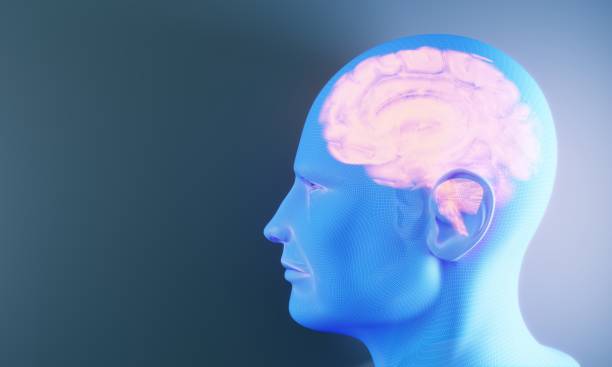Alcoholism and Malnutrition – what are the consequences?

All alcoholics suffer from malnutrition to some degree. A number of factors work together to make this condition almost synonymous with alcoholism.
Large doses of alcohol interfere with digestion and the passage of nutrients from the intestines into the bloodstream. The alcoholic’s liver has a decreased ability to convert and release nutrients and make them available throughout the body. Without adequate nutrients, the cells, already weakened by long exposures to alcohol’s toxic effects, are not able to create bone, tissue, blood, or energy. The sick and injured cells thus do not have the resources to repair themselves, and damage continues unchecked.
Even the alcoholic’s earliest psychological and social problems stem from or are aggravated by nutritional deficiencies. For example, a thiamine deficiency (extremely common in alcoholics) can cause loss of mental alertness, easy fatigue, loss of appetite, irritability, and emotional instability. If the deficiency is allowed to continue, more severe mental confusion and loss of memory may develop.
In the later stages of alcoholism, the alcoholic is often so sick that they cannot eat, thus aggravating the already serious nutritional deficiencies. Massive vitamin or mineral shortages caused by long and heavy drinking may result in several unusual diseases of the central nervous system, including polyneuropathy, Wernicke’s encephalopathy, Korsakoff’s psychosis, and amblyopia.
Polyneuropathy is a nutritional disorder generally associated with deficiencies of the B complex vitamins, including thiamine, which weaken and eventually damage the peripheral nerves outside the brain and spinal cord. These nerves, which are similar to thin, elongated wires, carry electrical/chemical impulses which instruct the legs, arms, and torso to lift, move, run, walk, or feel warmth, cold, pain, and pressure. The strength of the current in the nerve depends on adequate food and nutrients for its power source. When the nerves are deprived of nutrients, the power of the sensory and motor impulses diminishes and weakens, and the nerves gradually lose their ability to transmit sensory and motor signals.

The first indications of polyneuropathy are numbness and tingling sensations, commonly referred to as “pins and needles,” in the extremities, typically the toes or fingers. As the condition progresses, the sensations occur higher in the limbs, affecting hands and arms, feet and legs.
Polyneuropathy is reversible if arrested early enough. If the alcoholic stops drinking and continues to abstain from alcohol, and if he pays careful attention to his diet and vitamin and mineral intake (particularly the B vitamins), the nerves will heal themselves fairly quickly.
In the controlled environment of a rehab, the person is given adequate and appropriate nutrition and supplements, while ensuring abstinence for speedy healing.
If the alcoholic continues to drink, which is most likely without external support, malnutrition progresses unchecked, and there will come a time when the damage is permanent and irreversible. Muscle tone will be lost, and the muscles will atrophy. Pain may be excruciating. Late-stage alcoholics with irreversible polyneuropathy may be able to walk clumsily, if at all.
Wernicke’s encephalopathy, named after a nineteenth-century German psychiatrist and brain specialist, is a rare disease usually produced by a severe deficiency in Vitamin B1(thiamine). The disease is marked by a rapid onset of headaches, double vision, abnormal eye movements, tingling sensations and numbness associated with polyneuropathy, muscular incoordination, stupor, and brain haemorrhage. The condition is also frequently accompanied by confusion, agitation, and hallucinations seen in delirium tremens. Wernicke’s encephalopathy is sometimes a precursor of the DTs. That’s why a newly admitted client at Hope Trust is closely monitored by a psychiatrist to ensure timely medical intervention.
Until forty years ago, the prognosis invariably was death, but after the B vitamins were synthesised and readily available, a significant improvement in the condition became possible, and the symptoms are now largely reversible if treated promptly. Immediate treatment is essential, however, because the condition swiftly progresses into the generally irreversible mental disorder called “Korsakoff’s psychosis.”
Korsakoff’s psychosis, first described in 1890 by the Russian psychiatrist Sergei Sergeyevich Korsakoff, is caused, in part, by vitamin B1deficiencies, and it generally results in irreversible brain damage. The disorder has several striking characteristics, including hallucinations, the loss of short-term memory, and the consequent fabrication of stories to fill in the gaps (termed “confabulation”). The person is often able to remember past events but is thoroughly confused as to present or recent events, such as where he is, why he happens to be there, what he has just eaten, or who may be sitting next to him.
Amblyopia, another rare disease, occurs in approximately one in two hundred hospitalised alcoholics. It is characterised by progressive blurring or dimness of vision and, in some cases, difficulty in distinguishing green from red. Although the specific nutritional deficiency responsible for this condition has not been identified, amblyopia is readily reversible with improved nutrition, and specifically, large doses of the B vitamins.
However, an alcoholic usually continues to drink even when drinking is slowly but surely destroying them.
Professional support that is available at a rehab facility is important to stop the downward spiral. An integrated treatment program includes an expert medical and psychiatric assessment soon after admission. Some of the psychological symptoms of malnutrition described above may appear like normal withdrawal symptoms. A psychiatrist is able to diagnose the condition and start appropriate treatment.
If you or a loved one is struggling with addiction, call 9000850001 or 7893003070